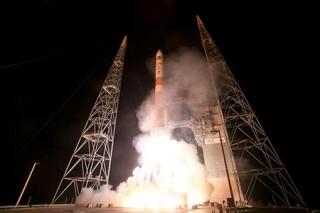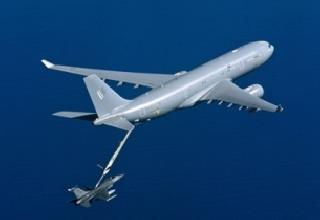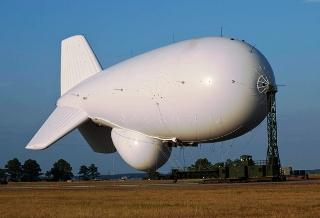
Wideband Global SATCOM - 6 satellite launch. Photo: Boeing
CAPE CANAVERAL AIR FORCE STATION (BNS): The US Air Force sixth Wideband Global SATCOM (WGS-6) satellite has been launched successfully from Florida's Cape Canaveral Air Force Station.
The satellite was launched on Wednesday at 8:29 p.m. Eastern time on a United Launch Alliance Delta IV rocket and approximately 57 minutes later, controllers confirmed the satellite was functioning as expected.
The WGS spacecraft built by Boeing provide X- and Ka-band protected communications capability using shapable and steerable spot beams that are easily reconfigurable based on user needs.
The Evolved Expendable Launch Vehicle (EELV) programme was established by the United States Air Force to provide assured access to space for US Department of Defence and its international partners, including the Australian Defence Force.
According to media reports, Australia paid $707 million for Boeing to build the satellite and for United Launch Alliance, a partnership of Boeing and Lockheed Martin to put it into orbit.
This is the second WGS launch of the year, following the May 24 deployment of Wideband Global SATCOM -5.
The first WGS satellite was launched in 2007, the second and third followed in 2009, the fourth and fifth in 2012. The satellites have a design life of 14 years.
The Delta IV rocket was launched using a single ULA common booster core powered by an Aerojet Rocketdyne RS-68 main engine, along with four ATK GEM 60 solid rocket motors.
The five-meter diameter upper stage was powered by an Aerojet Rocketdyne RL10B-2 engine with the satellite encapsulated in a five-meter diameter composite payload fairing, the United Launch Alliance said in a statement.
 Previous Article
Previous Article Next Article
Next Article













The Indian Air Force, in its flight trials evaluation report submitted before the Defence Ministry l..
view articleAn insight into the Medium Multi-Role Combat Aircraft competition...
view articleSky enthusiasts can now spot the International Space Station (ISS) commanded by Indian-American astr..
view article